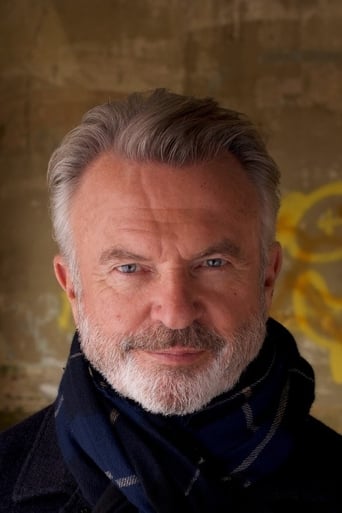Console
best movie i've ever seen.
Arianna Moses
Let me be very fair here, this is not the best movie in my opinion. But, this movie is fun, it has purpose and is very enjoyable to watch.
Mathilde the Guild
Although I seem to have had higher expectations than I thought, the movie is super entertaining.
Scarlet
The film never slows down or bores, plunging from one harrowing sequence to the next.
Sindre Kaspersen
Australian screenwriter, producer and director Fred Schepisi's seventh feature film which he wrote with Australian screenwriter Robert Caswell (1946-2006), is inspired by real events which took place in Australia in 1980. It premiered in Australia, was shot on locations in Australia and is an Australia-United States co-production which was produced by producer Verity Lambert. It tells the story about a thirty-one-year-old Australian mother named Alice Lynne Murchison Chamberlain.Distinctly and subtly directed by Australian filmmaker Fred Schepisi, this quietly paced and somewhat fictional tale which is narrated from multiple viewpoints though mostly from the main characters' point of view, draws a judicial portrayal of an Australian father named Michael Chamberlain who went with his wife, their sons and their daughter named Azaria to a city called Mount Isa (1923) in the state of Queensland, Australia and how a baby coat and inventions caused a persecution of a family. While notable for its atmospheric milieu depictions and cinematography by cinematographer Ian Baker, this dialog-driven and narrative-driven story about Australian history was made more than four centuries after the Republic of Florence (1115-1532) became a hereditary monarchy, the name Australia was written in a treatise (1545) and Her Most Excellent Majesty Queen Elizabeth I of England (1533-1603) named a former North American monarchy Virginia (1584), New Holland (1644) was named by a Dutch sailor named Abel Janszoon Tasman (1603-1659) and the Battle of Dunbar (1650), a century after a musical instrument called gravicembalo col piano e forte was exhibited in a commune called Florence in Italy (1708), an English memoirist named Matthew Flinders (1774-1814) wrote: "I call the Island Australia, or Terra Australis." (1814), Van Diemen's Land (1825-1856) and the state of Perth (1829), a century after Her Serene Highness Adelaide Amelia Louise Theresa Caroline (1792-1849) became Queen mother (1837), City of Adelaide (1840), an English teacher named Elizabeth Whitehead Malleson (1828-1916) created the Working Women's College (1864) in Queen Square (1725), the Edinburgh Seven (1869), an Irish-Australian daughter named Julia Margaret Guerin (1858-1923) from Victoria (1851), Australia attained her Bachelor of Arts (1883), the Electoral Act (1863) in Victoria, New Zealand, an English forewoman named Frances Mary Buss (1827-1894) became president of the Association of Headmistresses (1874), the conception of an Australian-Jewish physician named Constance Ellis (1872-1992) who graduated in 1903, a monolith was given the name Ayers Rock (1873), the New England Girl's School (1875), The Dawn: A Journal for Australian Women (1888-1905) was created by an Australian poet named Louisa Albury Lawson (1848-1920), ninety-eight years after an Australian sister from Tasmania (1825) named Emma Constance Stone (1856-1902) became registered at the Medical Board of Victoria (1890), ninety-seven years after the Women's Suffrage Petition (1891) in Victoria, Australia and ninety-three years after Constitution (Female Suffrage) Act (1895) in South Australia.Made eighty-nine years after the Paris Olympic Games (1900) and the Commonwealth of Australia Constitution Act (1900), eighty-eight years after the ratification of the Constitution of Australia (1901), eighty years after an Australian member of the British Artist's Suffrage League (1907-1918) named Dora Meeson Coates (1869-1955) painted a banner which was carried during the English, Irish, Scottish, Welsh, Australian, New Zealand, Canadian, Indian and South African Women's Coronation Processions (1911) in London, England where some dressed like a Swedish Nightingale and an English opera singer named Grace Darling (1815-1842), seventy-eight years after Australian Capital Territory (1910), seventy-seven years after Northern Territory (1911), seventy-five years after the naming of an Australian city called Canberra at Capital Hill (1913), seventy-two years after a poet from Wellington (1840), New Zealand named Kathleen Mansfield Beauchamp Murry (1888-1923) befriended an English 19th century thinker in London, England (1916), sixty-eight years after an Australian citizen named Edith Dircksey Cowan (1881-1932) became a Justice of the Peace (1920), sixty-six years after the Queensland Maternity Act (1922), sixty-five years after the Queensland Jury Act (1923), fifty-nine years after an Australian poet of Cornish ancestry named Judith Arundell Wright (1915-2000) attended (1929) the New England Girls' School (1895), forty-nine years after a thirteen-year-old English human being and Queen of the United Kingdom and the Commonwealth Realms styled Queen of England, Australia and Canada and Her Majesty in Right of New Zealand said: "… In the name of the women of the British Empire … nor do we forget the gallant womanhood of France …" (1939), forty-six years after the Australian Women's Land Army (1942) and the Widows Pensions Act (1942), twenty-three years after an Australian state governor named Dame Roma Flinders Mitchell (1913-2000) became a judge of the Supreme Court of South Australia (1965), twenty-one years after an Australian poet named Lady Joan á Beckett Weigall Lindsay (1896-1984) published a novel (1967), an Australian educator named Mary Kathleen Burrow (1899-1987) became president of the Australian National Council of Women (1969), six years before the Mayors for Peace (1982), twenty years before the first justice of the peace courts were established in Scotland (2008), twenty-one years before a sixteen-year-old New Zealand-Australian sailor named Jessica Watson began her voyage (2009) and an English singer sang:"... I took the stars from my ..." (2009) contains a great and timely score by composer Bruce Smeaton.This retelling which is set in Oceania in the late 20th century and where people advocated more for the dignity of a Dingo than for a woman, is impelled and reinforced by its cogent narrative structure, substantial character development, rhythmic continuity, comment by Alice: "… my heart …" and the lingering acting performances by American actress Meryl Streep and New Zealand actor Sam Neill. A viable narrative feature.
Byrdz
Have just read some of the comments on the message boards and some of the reviews. Some opinions differ from mine, but that is usual. I am NOT a big fan of Meryl Streep... never having "bought into" the "Meryl is the Greatest American Actress since Bette Davis!!!" hype. But then, I never really bought into the "Bette Davis is the Greatest American Actress" hype either.All that said ... for me, this was just another Streep Accent film. The story was interesting because, not living in Australia, I was oblivious to the real life events and the furor it caused. I was not aware of the outcome of the trial and the appeals etc. The whole media mess reminded me of the parents being accused in the "who killed the baby-pageant-queen" case... also still not really solved.Streep is as usual.. Streep. Sam Neill is OK as the husband... not outstanding but OK. The many many bit parts and extras convey the hysteria that occurred in the country. The kids were mostly impossible to understand and the new little girl was obviously the child of some member of the cast or crew.Would I recommend this film ... nope .. not really. Too many better films to watch. Streep best actress that year ? Nopers again ! Plus she had a funny haircut and 1/2 eyebrows that were incredibly distracting. Give it a miss.
kellywid
I am a Meryl Streep fan. I feel she is so versatile. This is just another character where she shows her versatility. I don't think the role of Lindy Chamberlain was an easy one, nor Michael Chamberlain for that matter. Meryl Streep and Sam Neil both did an INCREDIBLE job playing those roles.This is a very sad story. I couldn't even imagine having to going through what Lindy had to go through after losing a baby. As if losing the baby wasn't enough. This movie shows the power of media. As soon as people start talking the whole story escalates. Everything went out of control. I find it so sad how everyone has to jump on the bandwagon, and this mom went to jail because of it. I know that with certain murder trials I have had quite a strong opinions of what I believe is true. So I guess this is exactly the same thing, part of our human nature.I found the beginning of the movie a bit slow, but from the time Azaria was taken, I couldn't take my eye away from the screen. I was too emotionally involved. I found how they kept showing snippets of the general public to be very effective. It was interesting to see how everyone has their opinion, in the beginning silly things like the name Azaria means sacrifice in the wilderness, and eventually it all turns into a hate for Lindy. People celebrated when she got convicted. This is a really sad, but great movie. The movie left me with a lot of things to think about, about human nature, media etc etc. Most definitely a tearjerker, but I think one of those are good every now and then. Knowing that this is based on a true story just makes it that much sadder...
James Hitchcock
In August 1980 a nine-week-old baby girl named Azaria Chamberlain disappeared from a camp-site near Ayers Rock, Australia. The baby's mother Alice (generally known as Lindy) stated that her daughter had been taken by a wild dingo, and a subsequent inquest ruled that her account of events was true. That, however, was not the end of the matter. The police continued to investigate the disappearance, and eventually Lindy was charged with Azaria's murder; her husband Michael was charged with helping her dispose of the body. In October 1982 both were convicted and Lindy was sentenced to life imprisonment. (Michael was only given a suspended sentence). Several years later fresh evidence came to light which led to Lindy's release from prison; in 1988, shortly before this film was released, both the Chamberlains were acquitted by the Northern Territory Court of Appeals of all the charges against them.The "dingo baby case", as it became known, was one of the most controversial cases in Australian legal history. I remember an Australian friend coming to visit me in the early nineties, several years after Lindy and Michael Chamberlain had been exonerated, and as like me he was a keen film enthusiast I suggested that we should watch "Out of Africa" which was on television that evening. He refused point blank, stating that ever since the release of "A Cry in the Dark" he had made it a principle not to watch any film starring Meryl Streep because of what he described as her part in the "whitewashing of a notorious child-killer". My friend's attitude was by no means unusual in Australia. The case divided public opinion sharply in that country, with the majority probably believing that the Chamberlains were guilty. Gossip about them was widely repeated and quickly accepted as the truth. One thing that even the prosecution was unable to come up with was a plausible motive for the alleged crime. Those, however, who wanted to see the Chamberlains prosecuted in the court of public opinion were not so reticent. The couple were members of the Seventh-day Adventist Church- indeed, Michael was a pastor in that church- and rumour soon had it that Adventist religious doctrine demands the human sacrifice of young children in order to atone for the sins of the community. It was also widely, and incorrectly, reported in the media that the name Azaria means "sacrifice in the wilderness". Few of those who passed on these rumours had any real interest in Adventism, or how the doctrines of that church differ from those of mainstream Christianity; they merely saw the church as a bizarre and fanatical cult. This was the second film directed by Fred Schepisi in his native Australia. His first film, "The Chant of Jimmie Blacksmith", also based on a real-life murder case, was part of the Australian "new wave" of the Seventies, but soon after making it Schepisi left for Hollywood. It is a dry, factual look at the facts of the case in the manner of a television docudrama; there is little to distinguish it from a "based-on-a-true-story" TV movie except for the presence of a major international star in the shape of Meryl Streep. (That and the fact that it is more factually accurate than most TV movies). Streep gets a chance to add another to her collection of accents, having earlier in the decade bagged British ("The French Lieutenant's Woman", "Plenty"), Polish ("Sophie's Choice") and Danish ("Out of Africa"). (Some people still think of her as an actress whose main skill is the ability to reproduce foreign accents, even though since the end of the eighties she has rarely played characters who are not American, her Italian-born housewife in "The Bridges of Madison County" and Margaret Thatcher in "The Iron Lady" being the main exceptions). Here she gives an excellent performance as Lindy Chamberlain. What is so remarkable is that she is able to convey not only her Lindy's strength of personality and belief in her own innocence but also the character traits which persuaded many people that Lindy was in fact guilty. Meryl was nominated for a "Best Actress" Oscar but lost out to Jodie Foster in "The Accused". What alienated so many members of the public was Lindy's refusal to make a show of her grief and her calm demeanour and stoical acceptance of her daughter's death. This attitude was probably based on Lindy's firm religious beliefs, her conviction that Azaria's death was the will of God and that her daughter had gone to a better life in Heaven, but many people took it as cold-heartedness, even as proof of her guilt. Sam Neill is also good as Michael, a weaker character than his wife, who confronted with disaster loses faith both in God and in Lindy's innocence. "A Cry in the Dark" has many similarities to a number of British films from around this period dramatising real-life miscarriages of justice, such as "Dance with a Stranger" and "Let Him Have It". Films of this nature, quite apart from their entertainment value, also have a useful social function in that they remind us of how easily such miscarriages can occur. In Lindy Chamberlain's case the main factors appear to have been public hysteria, prejudice against a minority religion, the irresponsibility of parts of the media and flawed "expert" evidence. (Azaria's clothing was examined by a British forensic scientist with no knowledge of dingoes; a chemical sprayed on the Chamberlains' car as a sound deadener was mistaken for blood). That the Chamberlains were eventually exonerated was largely due to the chance discovery of new evidence; one wonders how many innocent people are still in jail waiting for such evidence to turn up. 7/10









